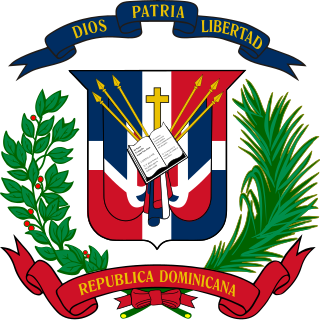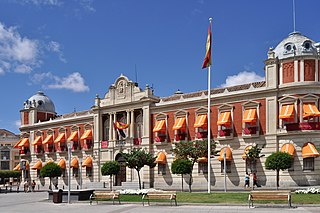
The politics of Equatorial Guinea take place in a framework of a presidential republic, whereby the President is both the head of state and head of government. Executive power is exercised by the government. Legislative power is vested in both the government and the Chamber of People's Representatives

The politics of Zimbabwe occurs in a society deeply divided along lines of race, ethnicity, gender and geography. The ZANU–PF party has historically been dominant in Zimbabwe politics. The party, which was led by Robert Mugabe from 1980 to 2017, has used the powers of the state to intimidate, imprison and otherwise hobble political opposition in Zimbabwe, as well as use state funds and state media to advance the interests of the party.

Local government is a generic term for the lowest tiers of public administration within a particular sovereign state. This particular usage of the word government refers specifically to a level of administration that is both geographically localised and has limited powers. While in some countries, "government" is normally reserved purely for a national administration (government), the term local government is always used specifically in contrast to national government – as well as, in many cases, the activities of sub-national, first-level administrative divisions. Local governments generally act only within powers specifically delegated to them by law and/or directives of a higher level of government. In federal states, local government generally comprises a third or fourth tier of government, whereas in unitary states, local government usually occupies the second or third tier of government.
The government of Argentina, within the framework of a federal system, is a presidential representative democratic republic. The President of Argentina is both head of state and head of government. Executive power is exercised by the President. Legislative power is vested in the National Congress. The Judiciary is independent from the Executive and from the Legislature, and is vested in the Supreme Court and the lower national tribunals.

The Dominican Republic is a representative democracy, where the President of the Dominican Republic functions as both the head of the government and head of the multi-party system. Executive power is exercised by the government. Legislative power is vested in the bicameral National Congress. The Judiciary is independent of the executive and the legislature.

The United Mexican States is a federal republic composed of 32 federal entities: 31 states and Mexico City, an autonomous entity. According to the Constitution of 1917, the states of the federation are free and sovereign in all matters concerning their internal affairs. Each state has its own congress and constitution.

A district is a type of administrative division that in some countries is managed by the local government. Across the world, areas known as "districts" vary greatly in size, spanning regions or counties, several municipalities, subdivisions of municipalities, school district, or political district.
Argentina is divided into twenty-three federated states called provinces and one called the autonomous city of Buenos Aires, which is the federal capital of the republic as decided by the Argentine Congress. The provinces and the capital have their own constitutions, and exist under a federal system.

Portugal is a unitary state with delegated authority to three levels of local government that cover the entire country:

The Chamber of Representatives is the lower house of the Congress of Colombia. It has 172 members elected to four-year terms.
A comarca is a traditional region or local administrative division found in Portugal, Spain, and some of their former colonies, like Brazil, Nicaragua, and Panama. The term is derived from the term marca, meaning a "march, mark", plus the prefix co-, meaning "together, jointly".
The Philippines is divided into four levels of administrative divisions, with the lower three being defined in the Local Government Code of 1991 as local government units (LGUs). They are, from the highest to the lowest:
- Regions are mostly used to organize national services. Of the 17 regions, only one—the Bangsamoro Autonomous Region in Muslim Mindanao—has an elected government to which the central government has devolved competencies.
- Provinces, independent cities, and one independent municipality (Pateros)
- Component cities and municipalities within a province
- Barangays within a city or municipality

The Supreme Court is the highest court in the Kingdom of Spain. Originally established pursuant to Title V of the Constitution of 1812 to replace —in all matters that affected justice— the System of Councils, and currently regulated by Title VI of the Constitution of 1978, it has original jurisdiction over cases against high-ranking officials of the Kingdom and over cases regarding illegalization of political parties. It also has ultimate appellate jurisdiction over all cases. The Court has the power of judicial review, except for the judicial revision on constitutional matters, reserved to the Constitutional Court.

Samir de los Caños is a municipality in the province of Zamora, Castile and León, Spain. According to the 2004 census (INE), the municipality has a population of 227 inhabitants. As of 2022, Samir de los Caños had 163 inhabitants.

The Judiciary of Spain consists of Courts and Tribunals, composed of judges and magistrates (Justices), who have the power to administer justice in the name of the King of Spain.

The term "provinces" has been used throughout history to identify regions of continental Portugal. Current legal subdivisions of Portugal do not coincide with the provinces, but several provinces, in their 19th- and 20th-century versions, still correspond to culturally relevant, strongly self-identifying categories. They include:

The 1833 territorial division of Spain divided the country into provinces, in turn classified into "historic regions". This division was followed by the ensuing creation of provincial deputations, the government institutions for most of the provinces, remaining up to this date. Nearly all of the provinces retain roughly or precisely the 1833 borders. Conversely, many of the historic regions correspond to present-day autonomous communities.

Government in Spain is divided into three spheres or levels: the State itself, the regions or autonomous communities and local entities. These levels are not hierarchical, meaning there is no supremacy or primacy of one over the other, but rather they are separately defined by their jurisdictional powers.

The Provincial Deputation of Ciudad Real or Provincial Council of Ciudad Real is the institution charged with the government and administration of the Spanish province of Ciudad Real.

The current configuration of the province of Granada is the result of a long process of territorial organization that reached its culmination in 1833, by means of the decree of provincialization promulgated by Javier de Burgos, Ministry of Development of the government of the regent Maria Christina of Bourbon. Until that date, what now constitutes the province of Granada was integrated within the limits of the so-called Kingdom of Granada.















